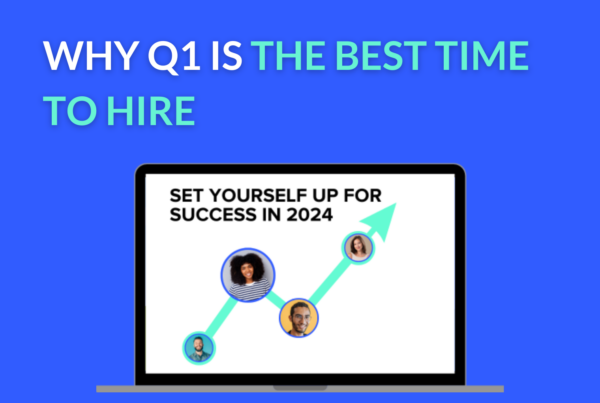As the world becomes increasingly connected and the jobs market gets ever more competitive, a standout employer brand is now a critical part of the hiring and retention process in FinTech. An employer brand describes an employer’s reputation as a place to work, and their employee value proposition. This is an asset that requires constant cultivation. LinkedIn found that organizations with great employer brands can see a 28% reduction in turnover and a 50% cut in hiring costs. For most FinTech companies, this equates to annual savings entering the millions.
Up to 75% of people believe that companies whose C-Suite executives and leadership team use social media to communicate about their core mission, brand values and purpose are more trustworthy.
Examples Of FinTech Companies with Standout Employer Branding
1) Monzo
Monzo has topped a list of the most appealing employers to UK tech talent. They boast a 3 per cent staff turnover rate, less than half the finance industry’s average of 6.1 per cent. Monzo’s success largely comes down to how it presents itself to candidates.
The “about” page outlines the company’s culture and mission to build “a bank, together”. This may sound fluffy, but effectively signposts its values not only to potential customers, but prospective employees too. Meanwhile, its blog is filled with updates on Monzo’s latest projects and progress on diversity and inclusion.
The Monzo playbook:
- Sort out your mission statement and avoid grandiose statements
- Adapt your culture to your business and do not assume that new people joining the business will already know your company culture
- Admit when you’re wrong
2) PaySafe
PaySafe focus on the balance between managing the expectations of these different employee groups is right. In addition, they have worked hard to create a compelling culture tailored to the values of their current employees and the people they want to attract.
They highlight a culture that emphasises inclusion, collaboration, success, fun and optimism, coupled with flexible working environments and benefits packages. Alongside their state of the art offices which support social and flexible working across Europe and North America also contribute to enhancing the employee experience. PaySafe have a focus on illustrating their treatment of their workers to improve business efficiency.
There are 4 steps to create a standout employer brand for your FinTech:
-
The Discovery Stage
-
The Analysis and Creation Stage
-
The Implementation and Communication Stage
-
The Measurement, Maintenance and Optimisation
1) The Discovery Stage: Conducting an Employer Brand Audit
The first stage of the process is understanding how your employer brand is perceived by various stakeholders. The employer brand audit will help you identify and correct the gaps that exist between how the company is presenting itself and how it is perceived by prospective and current employees.
This stage could compromise of:
- Holding workshops with senior management
- Running internal and external focus groups
- Carrying out employee surveys
- Auditing the candidate journey
Questions to ask in your employee survey
It is important to ask questions that will provide meaningful information when going through the employee surveys.
Here are some examples of questions that could be asked:
- How would you describe the company to a friend?
- Why did you choose to accept/reject the job offer?
- Why do you stay with the company year after year?
- Why are you leaving the company?
- Does the company Mission align with the action they take?
- Does the company live their Values?
2) Analysis and Creation: The Employer Value Proposition (EVP)
After collating this information, you should now have a clearer picture of what your employees think of the business as an employer – its distinctive ‘value proposition’. A useful rule — be aware of all the components of the business and then analayze them.
Areas of your internal brand to analayze:
- Your job descriptions
- Social media profiles
- Internal communications
- Performance reviews and progression communication
- Hiring process and communication
- Remuneration and benefits packages
- Commission or equity structure
- Learning and Development opportunities
- Exit interview process
Is there a gap between what you are currently saying you do or offer, and what your employees think you offer? This is where you can put this right. Take the feedback from your current and prospective employees and make sure that your actions match your words, whether that be in the benefits you offer, management process, or way you communicate the company culture.
Creation of your Employer Value Proposition
Armed with the information collected during the employer brand audit, you’re ready to craft your employee value proposition (EVP). The EVP is the “people deal” that exists between an organization, its employees, and the talent it’s looking to recruit.
It answers two important questions:
- What the individual employee or candidate can expect of the company?
- What the company expects of the individual employee or candidate?
Think of your EVP as the guiding light of your employer branding efforts. While you may never share it publicly, your EVP will shape your communications moving forward.
3) Implementation and Communication
Where the company decides to highlight their revised employer branding is dependent on where they believe their audience will engage with more. A company’s website can be a great resource for them to utilise but if the company is unknown, your recruiting pipeline is more difficult to engage. Your employer brand might be quite different to your corporate brand too, so you might need to look into a specific area of your website dedicated to employees. Social media is a very powerful tool for distributing job openings, benefits of the company and company values.
There are countless avenues you can utilize to promote your employer brand such as:
- Job Descriptions/ Adverts – Job descriptions may not sound like the place to let your personality shine, but they’re often the first interaction job seekers will have with your company so make sure they reflect your desired employer brand.
- Career Page – Your career page should be a central, public hub for your employer branding materials, making it one of the most important touchpoints with potential candidates. Compelling photography or video, employee testimonials, your core values and more can all help convince candidates that you’re the place to be, so spend some time making this reflect your business and culture.
- Online Reviews – These days, almost every job seeker reads employer reviews before applying to a job and coming across a negative review can stop them in their tracks. While you can’t control anonymous reviews, you can respond to them, and that can have a serious impact on perceptions. 62% of job seekers say their opinion of a company improved after seeing it respond to a negative review, so pay attention to what people are saying about you and don’t be afraid to respond.
- Candidate Experience – If you’re lucky enough to convince a great candidate to apply, at some point you’ll interact with them offline. Whether it’s an initial phone screen or in-office interview, the experience that candidate has must align with your employer brand or you’re almost guaranteed to lose them.
4) Measurement, Maintenance, and Optimisation
After all that hard work, it is important to consistently check the progress and maintain momentum.
- Probing internal and external response and perception of the new brand
- Measuring improvements in the recruitment and retention metrics
- Measuring uptake in terms of actions that demonstrate the business is ‘living the brand’
Companies shouldn’t underestimate the power of a good employer branding because people want to do business with great companies. Building a trustworthy reputation is vital and your treatment of employees will affect your image. All these social posts can impact a buyers decision to choose your brand over another as they do their research. Establishing effective employer branding can also ensure that the company is employing a candidate who fits their image and company culture.
Storm2 are experts in FinTech Recruitment, matching the senior talent to innovative businesses globally. We can help communicate your brand values to prospective candidates through our deep network, and pride ourselves on finding people that are a good culture fit (or add!) to your business. Get in touch today for a confidential chat on how we can assist with your growth plans.









